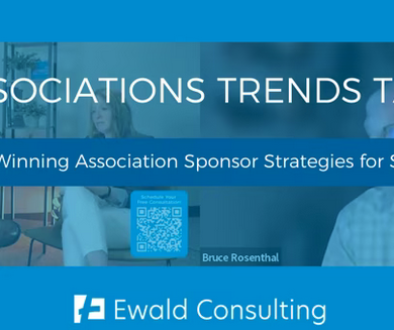Three Ways to Use Failure to Improve Your Board
It’s inevitable — your board fell short. Between managing budgets, events, and loyal association members, your board has a lot to manage and something fell through the cracks.
Failure is often looked at as a catastrophic event. You missed something and see it as a sign that your board is not performing as it should. But you are not alone. Boards all over the world are constantly failing and getting back up.
Take, for example, the UK-based company Sports Direct. Corporate Governance Institute illustrates their failure and recovery:
“Board failures often occur when the board doesn’t do the basics right. Sports Direct is a massive sporting goods provider [and]…The board of directors’ failure was apparent. The board had failed in its fiduciary duty to properly oversee and ensure adequate working conditions for its workers — particularly vulnerable workers who could be easily abused.
After the publication of the massive scandal, the board of directors and others stepped in, creating policies and amending their business strategy to support workers. This allowed employees to make complaints anonymously and ensured that there were additional inspections of the company’s facilities.”
Your mistake might not be of the magnitude of Sports Direct. In 2014, ASAE defined most frequent board failures as not preparing for meetings, being unable to make decisions, not properly vetting board members, not properly executing strategy, and much more.
Failure is an opportunity unlike any other. When you slip, you have nowhere to go but up. This is an extraordinary opportunity to step back, evaluate, and make your board better. Here are three ways to get back up:
- Deal with the emotions at hand: Harvard Business Review explains, “It’s often harder to lead a team past a failure than it is to help one person.” Post-failure, your board is likely coming back with feelings of guilt, anger, resentment, and stress. HBR says it is vital for Executive Directors not to come back too positively. Sit down with your board members and listen. What do they think went wrong? Before you can move on, you must get it all on the table. Figure out who didn’t feel heard, who may be falling short, and other personal issues that may be floating around. To move forward, you need to listen and be a genuine support system.
- Empower board members to speak up. The Stanford Social Innovation Review lists this as one of the top ways to improve boards, “Minority views and skepticism should be welcomed around the board table, with all members encouraged to speak their minds and vote their consciences, even if this creates tension. Passionate debate and non-unanimous votes are a signal of a strong, not weak, governing body.” It’s human nature to avoid conflict in day-to-day operations, but it’s essentially putting your board in a pressure cooker. When you discuss coming back from failure with your board, empower members of the board to speak up. That’s their job, is it not? This will help you spot critical mistakes earlier and build trust within your board.
- Recognize that the board drives organizational strategy. Effective Governance says in a post, “It is generally accepted today that the board has a significant role to play in the formulation and adoption of the organization’s strategic direction.” This may seem obvious, but board members may not realize in routine meetings that you are discussing how to drive your organization forward. While having good relationships between board members is crucial for building trust, at the end of the day that is not what matters. Your board is there to serve, not pedal their own agendas. Remind board members that they are on the board as part of something bigger than just their one point of view.
“I have not failed. I’ve just found 10,000 ways that won’t work.” This age-old quote from Thomas Edison still rings true today. Failures are not defeats. Your board’s failure is just one way you’ve determined not to work. Failure makes you stronger and more attentive. It’s not defeat, it’s an opportunity.
You’re not in this alone. Listen to our podcast, Associations Next, for more information on how to make your association even better.




